
Room 32-D572
Massachusetts Institute of Technology
77 Massachusetts Avenue
Cambridge, MA 02139
(617)-253-7220
I believe that somebody's success or failure is a pure consequence of the background that s/he comes from. — Borjan Gagoski
Here are a few words about my background, my origins, my roots. Take it as fact or take it as fiction; it is really some of both. I neither make any claims about accuracy nor do I cite any sources. It is far from comprehensive and contains numerous unfounded statements.
Vṛṣṇi Vaṃśa
The Varshneys have traditionally been an endogamous community involved with business and trade. This twice-born group has its origins in Braj (or Vraja)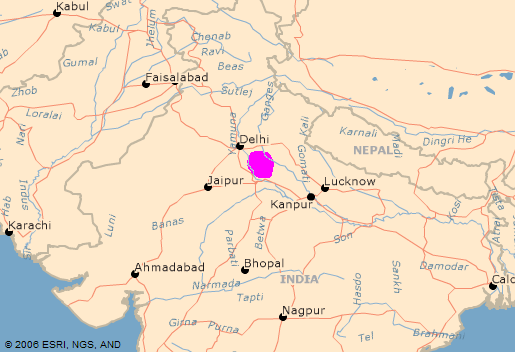 , a region of the Indian subcontinent centered on the doab between the Yamunā and Gaṅgā rivers. Located primarily in the present-day state of Uttar Pradesh, Braj includes cities such as Mathura, Vrindavan, Agra, Aligarh, Hathras, and Etah.
, a region of the Indian subcontinent centered on the doab between the Yamunā and Gaṅgā rivers. Located primarily in the present-day state of Uttar Pradesh, Braj includes cities such as Mathura, Vrindavan, Agra, Aligarh, Hathras, and Etah.
Varshney, spelled Vārṣṇeya using the international alphabet of Sanskrit transliteration, indicates descent from Vṛṣṇi by etymology. In the vernacular of Braj, Varshney may be encountered as Barahseni, and in alternate transliterations as Varshnei or Varshneya. Many Varshneys have adopted the generic surname Gupta or a middle name such as Kumar, Prasad, or Chandra as their last name. Dwadash-Shreni, a back-formation from Barah-seni may also be seen.
The mythical etiology of the Varshneys can be traced to the beginning of creation in this cosmic cycle. Within the lunar dynasty, Yadu, the oldest son of Yayāti, was cursed by his father that his descendants would never enjoy kingship. 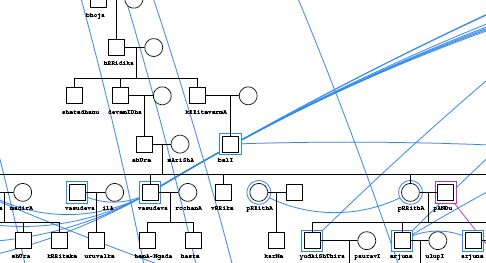 One of these descendants was Vṛṣṇi whose subsequent descendants were leaders within a republic composed of several related lineages, whose capital city was Mathurā.
One of these descendants was Vṛṣṇi whose subsequent descendants were leaders within a republic composed of several related lineages, whose capital city was Mathurā.
Near the end of the age of Dvāpara, political turmoil gripped the republic. With the backing of Jarāsandha, the powerful king of Magadha, the despotic Kaṃsa of the Bhoja lineage imprisoned his father Ugrasena and seized control. He also imprisoned his paternal first cousin Devakī and her husband Vasudeva, who was a prominent member of the Vṛṣṇi lineage. The first six sons of Vasudeva and Devakī were killed upon birth. The seventh and eighth sons, Balarāma and Kṛṣṇa, were shepherded away to the safety of Vṛndāvana across the river Yamunā.
Some years later, when the brothers had grown up, they were retrieved by Akrūra, the ranking member of the Vārṣṇeyas 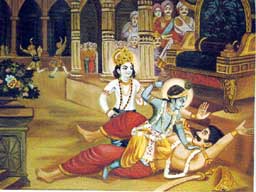 (eight generations above Vasudeva), and killed Kaṃsa, freed their parents, and restored Ugrasena to power. After repeated attacks from Jarāsandha, a migration from Mathurā to a new, island city Dvārakā was undertaken. Kṛṣṇa, with the help of the Pāṇḍava brothers including Arjuna, his first cousins through Vasudeva’s sister Pṛthā, later defeated Jarāsandha.
(eight generations above Vasudeva), and killed Kaṃsa, freed their parents, and restored Ugrasena to power. After repeated attacks from Jarāsandha, a migration from Mathurā to a new, island city Dvārakā was undertaken. Kṛṣṇa, with the help of the Pāṇḍava brothers including Arjuna, his first cousins through Vasudeva’s sister Pṛthā, later defeated Jarāsandha.
Kṛṣṇa had a son Pradyumna with his wife Rukmiṇī; Pradyumna had a son Aniruddha with his wife Rukmavatī; Aniruddha had a son Vajra with his wife Rocanā.
A conflict between the Pāṇḍavas and their paternal first cousins, the sons of Dhṛtarāṣṭra and Gāndhārī, erupted into a war without parallel. Some members of the Andhaka-Bhoja-Vṛṣṇi republic sided with one warring party and others with the other. After the war ended with almost no survivors, Gāndhārī cursed Kṛṣṇa for failing to avert the death and destruction; the curse stipulated that Kṛṣṇa die alone after a fratricidal end to his entire clan.
Thirty-six years later, Gāndhārī’s curse came to fruition. With Kṛṣṇa and his kinsmen on an ocean-side retreat from Dvārakā, an argument arose over sides taken during the great war. The argument escalated into a fight and then into an all-out conflagration that resulted in the fratricidal end that was called for. Balarāma left the world in meditation and Kṛṣṇa was shot by a deer hunter.
The sole survivor of the Vṛṣṇi lineage was Vajra. Arjuna escorted the women and children back to the Braj region from Dvārakā and installed Vajra as their leader. On the journey, Arjuna was unable to prevent highwaymen from robbing the travelers of much of their wealth. Dvārakā sank into the ocean. The Vārṣṇeyas, of the dynasty of Vṛṣṇi, are descendants of Vāsudeva Kṛṣṇa.
Collegiate Education in the Practical and Productive Sciences
The Erie Canal was 'America’s first engineering school' in a hands-on, apprenticeship kind of way. The apprenticeship-style learning of subjects such as agriculture and engineering was common in traditional societies including those of ancient India. (Formal education was concerned with subjects like classical languages, literature, jurisprudence, religion, and astronomy.) The United States at the time of the building of the Erie Canal was no different in this regard. The grandes écoles in France, however, had initiated a departure from apprenticeship-based learning of technical subjects.
The teaching of agriculture, mining, and engineering in a collegiate, textbook-based style spread and eventually resulted in the founding of institutions in the United States such as the University of Illinois, Cornell University, and the Massachusetts Institute of Technology (MIT). The Morrill Land Grant Act provided an impetus for their organization and bestowed upon them a mission of service. Cornell in particular combined classical education with technical education in a new way and came to be known as 'the first American university.'
As these American universities were establishing themselves and growing, the British were increasing their presence in India and supplanting the Indian formal education tradition with a British form of education that some, including Bāḷ Gaṅgādhar Ṭiḷak, an early leader in the movement for India's complete independence, felt was demeaning to Indian civilization. Another view held by Ṭiḷak, himself a classically educated brāhmaṇa, was of the equality of jñāna-yoga and karma-yoga; the idea of putting the theoretical and the practical on equal par was of course not unique to Cornell University.
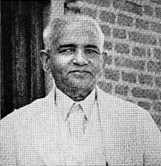 Within this climate, a young man from Braj by the name of Ishwar Das Varshnei journeyed abroad and wound up at MIT, where he learned chemical engineering and specifically the manufacture of glass. He returned to India with scientifically-based engineering training and joined Ṭiḷak at Talegaon in the Mahārāṣṭra-deś region where the Samarth Vidyalaya, an educational institutional devoted to practical education within the context of India's cultural heritage, had been started. There, Ishwar Das was a key figure in establishing the Paisa Fund Glass Works, which took its name from a mutual fund to which farmers contributed one paisa each. He came to be known as the father of the Indian glass industry. Students of the Samarth Vidyalaya were trained in glass manufacturing and set up other glass factories around the nation.
Within this climate, a young man from Braj by the name of Ishwar Das Varshnei journeyed abroad and wound up at MIT, where he learned chemical engineering and specifically the manufacture of glass. He returned to India with scientifically-based engineering training and joined Ṭiḷak at Talegaon in the Mahārāṣṭra-deś region where the Samarth Vidyalaya, an educational institutional devoted to practical education within the context of India's cultural heritage, had been started. There, Ishwar Das was a key figure in establishing the Paisa Fund Glass Works, which took its name from a mutual fund to which farmers contributed one paisa each. He came to be known as the father of the Indian glass industry. Students of the Samarth Vidyalaya were trained in glass manufacturing and set up other glass factories around the nation.
Back in the Braj region, he began the U. P. Glass Works in the town of Bahjoi with his sons. The oldest of the four, Bishambar Dayal Varshnei introduced sheet glass manufacturing to India. Bishambar Dayal's wife, Ganga Devi, belonged to a family that would go on to form the publishers P. C. Dwadash Shreni and Company and support education in the practical and productive sciences through books on subjects such as agricultural economics and mathematics. Bishambar Dayal Varshnei died at a young age and was survived by four children.
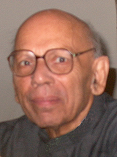 One way to address the land grant mission that emerged in the United States was through extension, the making of knowledge and resources from universities available to the general public. Extension was taken up not only by land grant universities locally and statewide, but also by religious and non-religious organizations internationally. Sam Higginbottom established the Allahabad Agricultural Institute near the confluence of the Yamunā and Gaṅgā rivers and engaged in extension from the outset. Later, Mason Vaugh, a graduate of the University of Missouri, established the first department of agricultural engineering outside of North America there. Raj Kumar Varshney, a young man from Dibai, a town in the Braj region, joined this institute as a lecturer after being guided towards completing an M. Sc. in mathematics rather than joining the social movements of the day that had come along with the independence struggle.
One way to address the land grant mission that emerged in the United States was through extension, the making of knowledge and resources from universities available to the general public. Extension was taken up not only by land grant universities locally and statewide, but also by religious and non-religious organizations internationally. Sam Higginbottom established the Allahabad Agricultural Institute near the confluence of the Yamunā and Gaṅgā rivers and engaged in extension from the outset. Later, Mason Vaugh, a graduate of the University of Missouri, established the first department of agricultural engineering outside of North America there. Raj Kumar Varshney, a young man from Dibai, a town in the Braj region, joined this institute as a lecturer after being guided towards completing an M. Sc. in mathematics rather than joining the social movements of the day that had come along with the independence struggle.
In addition to finding its way to the United States, the educational style of the French grandes écoles had also found its way to the British Empire, with the establishment of Roorkee College, later Thomason Civil Engineering College, in the Garhwal region at the foot of the Himālayas. For more than a century, it was the premier engineering institution in the nation. In the years that India achieved its independence and set up a democratic republic, the college was rechartered as the University of Roorkee and the first class of electrical engineers graduated. This class included Maheshwar Prasad Varshney, the son of an Aligarh lawyer and bridegroom of Bishambar Dayal Varshnei's younger daughter Vimla.
By this time, the post World War II era, technical disciplines in colleges and universities had become quite research-oriented and the majority of professors doctorate-holders. Doctoral education in engineering at American universities was expanding and also growing at universities in France. (The grandes écoles retained their focus on producing 'real' engineers.) Maheshwar Prasad journeyed to France and earned a doctorate in electrical engineering at the University of Paris (Sorbonne) with the intention of becoming a professor. Upon his return to India, he played a role in the establishment of the Indian Institute of Technology at Kharagpur and the establishment of the electrical engineering department in particular. The push for Indian Institutes of Technology, modeled after MIT, as a way to uplift post-independence India was led by, among others, Humayun Kabir, a Bengali scholar and educator. Maheshwar Prasad Varshney was also involved in the establishment phase of Motilal Nehru Engineering College in Allahabad; during this time, he crossed paths with Raj Kumar Varshney.
The post World War II era was also a time when the exchange of knowledge and professional talents through educational contacts among nations of the world was taking off. The United Nations was formed and within it, the United Nations Educational, Scientific, and Cultural Organization (UNESCO). It was a time when The Race Question, co-drafted by Humayun Kabir, was issued by UNESCO, condemning racism and any attempt to relate intelligence to race.
The United States government sponsored students from other lands to come for advanced study in the practical and productive sciences. Raj Kumar Varshney was able to come to the University of Illinois at Urbana-Champaign and study for the master's degree in electrical engineering, and then come again several years later for doctoral study.  Upon his first return to India, he continued to teach at Allahabad Agricultural Institute. After his second return to India, he taught and researched at Panjab Agricultural University in Ludhiana, which was modeled after land grant colleges in the United States, and he also promoted systems theory in the country through the Systems Society of India. Maheshwar Prasad Varshney joined UNESCO and helped set up engineering colleges in the Iraqi cities of Mosul, Baghdad, and Sulaymaniyah as well as in Bangkok, Thailand.
Upon his first return to India, he continued to teach at Allahabad Agricultural Institute. After his second return to India, he taught and researched at Panjab Agricultural University in Ludhiana, which was modeled after land grant colleges in the United States, and he also promoted systems theory in the country through the Systems Society of India. Maheshwar Prasad Varshney joined UNESCO and helped set up engineering colleges in the Iraqi cities of Mosul, Baghdad, and Sulaymaniyah as well as in Bangkok, Thailand.
During his second stay in Urbana-Champaign, Raj Kumar Varshney was able to bring his wife Narvada and his three children with him. The older son Pramod was able to complete the bachelor's degree in electrical engineering and computer science from the University of Illinois during this time. Pramod remained at Illinois after his parents and siblings returned to India and earned a master's degree and doctorate in electrical engineering.
He then joined the faculty at Syracuse University in Syracuse, New York, a city that had grown up around the Erie Canal, and wed Anju, the older daughter of Maheshwar Prasad and Vimla Varshney. His most important contributions have been on the research side of things, in the subfield of distributed detection and data fusion. Pramod and Anju's twin sons, Lav and Kush, joined the institution "where any person can find instruction in any study," Cornell University for undergraduate education and thereafter MIT for graduate education. Kush spent one summer in Paris, residing at Maison de l'Inde, a dormitory whose foundation stone was laid by Humayun Kabir, and working on research at one of the grandes écoles, École Centrale.